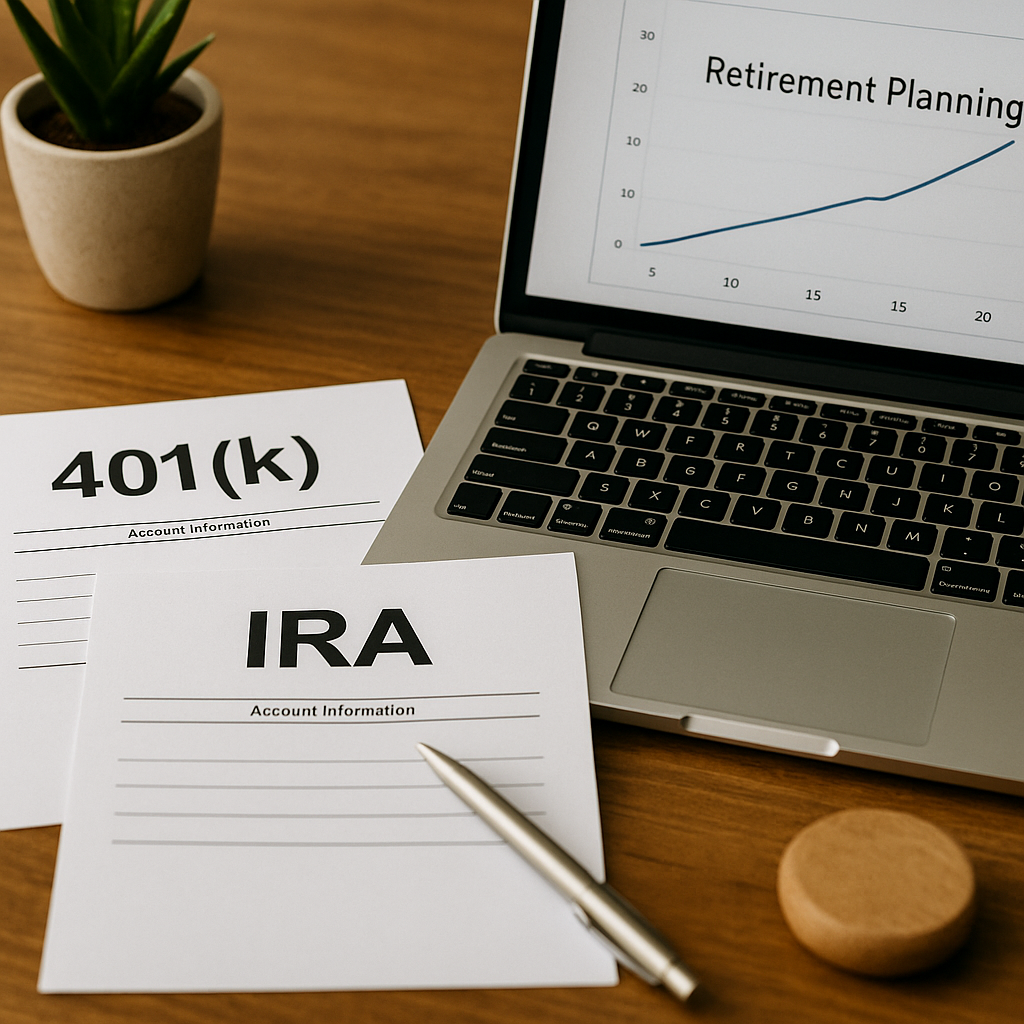Planning for retirement can feel overwhelming, especially when you’re just getting started. With so many account types and tax rules, it’s easy to get lost in jargon. This guide will simplify the two most common vehicles—your 401(k) and IRA—and explain how each works, compare 401k vs IRA, and share practical tips on how to save for retirement. By the end, you’ll have a clear roadmap for retirement planning and know which account is right for you as a retirement account for beginners.
What Are Retirement Accounts?
Why You Need One
Retirement accounts are special investment vehicles with tax advantages designed to help you accumulate funds for your post‑career years. Unlike a regular brokerage account, these accounts defer taxes on earnings, encourage long‑term saving, and often provide additional benefits such as employer matching or tax deductions.
Key Features
- Tax Deferral or Exemption: Contributions or earnings grow tax‑deferred (traditional accounts) or tax‑free (Roth accounts).
- Contribution Limits: Annual maximum contributions set by the IRS.
- Withdrawal Rules: Penalties apply for early withdrawals before age 59½, with some exceptions.
401(k) Basics
How It Works
A 401(k) is an employer‑sponsored retirement plan. You contribute a portion of your paycheck—pre‑tax for a traditional 401(k) or after‑tax for a Roth 401(k)—and invest in a menu of funds selected by your employer’s plan administrator.
Employer Match
Many companies offer a matching contribution, typically 50% to 100% of your deferral up to a certain percentage of your salary (e.g., 5%). This is essentially “free money” that boosts your retirement savings.
Contribution Limits
- 2025 limit: $23,000 for those under 50.
- Catch‑up contributions: Additional $7,500 for those 50 or older.
IRA Essentials
Traditional vs. Roth IRA
An IRA (Individual Retirement Account) is opened and managed by you, not your employer. Traditional IRAs allow pre‑tax contributions, while Roth IRAs use after‑tax dollars, offering tax‑free withdrawals in retirement.
Contribution Limits
- 2025 limit: $7,000 per year under age 50.
- Catch‑up: Additional $1,000 for ages 50 and over.
Investment Choices
IRAs typically offer a wider range of investments—stocks, bonds, ETFs, mutual funds—compared to many 401(k) plans.
401(k) vs IRA: Key Differences
| Feature | 401(k) | IRA |
|---|---|---|
| Contribution Limit | $23,000 (+$7,500 catch‑up) | $7,000 (+$1,000 catch‑up) |
| Tax Treatment | Traditional or Roth | Traditional or Roth |
| Employer Match | Often available | Not available |
| Investment Options | Plan‑selected funds | Broad market access |
| Access & Fees | Plan fees may apply | Varies by brokerage |
How to Save for Retirement: Practical Steps
1. Start Early and Automate
Set up automatic contributions from your paycheck into your 401(k) and schedule monthly transfers into an IRA. Early and consistent savings harness the power of compound growth.
2. Maximize Employer Match
Contribute at least enough to get the full employer match in your 401(k). That immediate 100%–50% return on your contribution is the highest guaranteed “investment” you’ll find.
3. Diversify Across Accounts
Use both vehicles: Max out your 401(k) match first, then fund a Roth IRA for tax‑free growth, and return to your 401(k) to hit higher limits if possible.
4. Monitor and Rebalance
Review your asset allocation annually. Rebalance to maintain your target mix of stocks, bonds, and cash based on your risk tolerance and time horizon.
Choosing the Right Path for Beginners
If you’re unsure where to start:
- Join your employer’s 401(k) plan and get the match.
- Open a Roth IRA for tax diversification and broader investments.
- Increase contributions as your income grows.
As a retirement account for beginners, this combination balances ease, tax benefits, and flexibility.
Conclusion
Understanding the fundamentals of your 401(k) and IRA is crucial for effective retirement planning. By comparing 401k vs IRA, leveraging employer matches, and following simple savings strategies, you’ll build a robust retirement portfolio. Remember: starting early, automating contributions, and periodically reviewing your plan are the keys to long‑term success. Begin today, and secure your financial future with confidence.

Leave a Reply